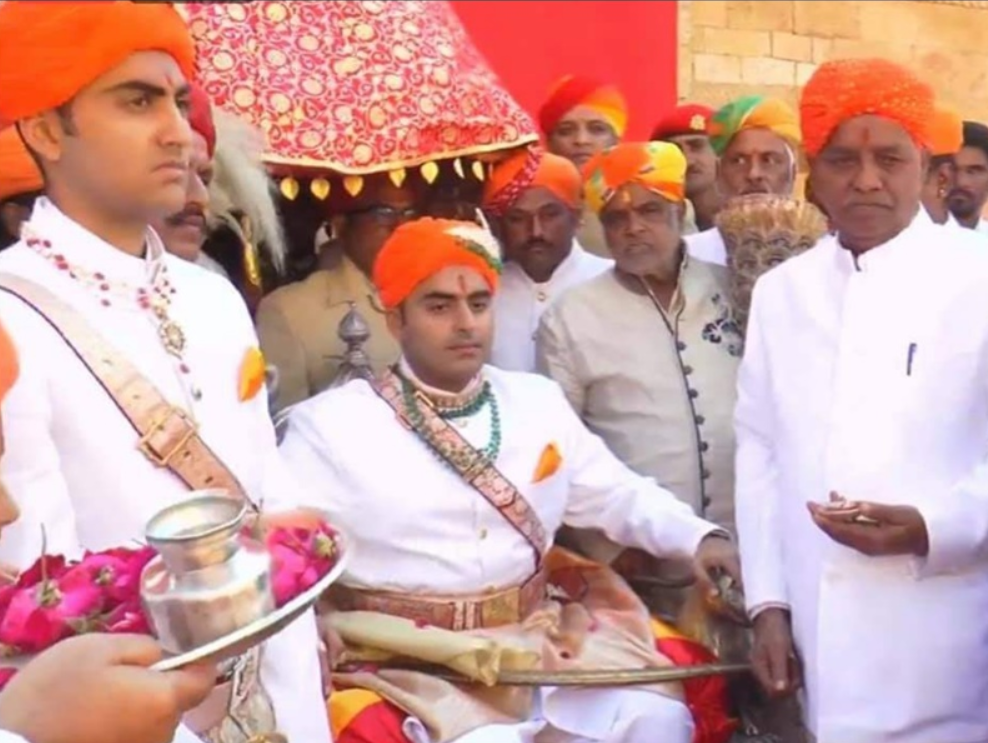
Jaisalmer Fort, also known as the Sonar Quila (Hindi for “Golden Fort”), isn’t just a majestic piece of Rajput architecture; it’s a vibrant, living testament to Rajasthan’s rich history. Unlike many forts in India, Jaisalmer isn’t a mere tourist destination – it’s a bustling community where a quarter of the city’s population calls home.
A Fort Steeped in History
Built in 1156 AD by Rawal Jaisal, the fort’s origins are shrouded in legend. Folklore tells the tale of the lone hermit who aided the king in choosing the fort’s location, a promise secured with a pair of golden scissors – hence the name “Sonar Quila”. Fort’s strategic location at the crossroads of ancient trade routes, including the Silk Road, made it a center of commerce and a coveted prize. The massive yellow sandstone walls, tawny in the desert sun and glowing gold at sunset, earned it another moniker – Swarn Durg, or “Golden Fort”.
Lineage of Jaisalmer Royals:
The Jaisalmer royals trace their lineage back to the Yaduvanshi Bhati Rajput clan. Here’s a breakdown of their lineage:
- Origin: The lineage starts with Jaitsimha, a ruler of the Bhati clan.
- Founding Father: Deoraj, a famous prince during the 9th century, is considered the founder of the Jaisalmer royal house. He received the title of “Rawal,” signifying his royal status.
- HH Maharajadhiraj Maharawal BRIJRAJ SINGH, Maharawal of Jaisalmer [1982-2020] (Badal Vilas Palace, Jaisalmer, Rajasthan, India), born , succeeded to the gaddi on 13th March 1982, married 28th January 1993, HH Maharani Sahib Raseshwari Devi, daughter of Shri Sahadev Shumsher Jung Bahadur Rana of Nepal, and has issuea. He died on due to illness.
- Maharajkumar Chaitanya Raj Singh Bhati (qv)
- Maharajkumar Janmajeya Singh Bhati, born .
- HH Maharajadhiraj Maharawal CHAITANYA RAJ SINGH, Maharawal of Jaisalmer

A Walk Through the Golden City
Step inside the fort’s four grand gates and you’ll be transported to a bygone era. Wander through narrow lanes lined with traditional Rajasthani shops selling handicrafts, textiles, and jewelry. Marvel at the architectural brilliance – a captivating blend of Rajput and Islamic influences. Don’t miss the intricately carved temples, including the Jain temples and the Laxminath temple, each an artistic marvel.
Exploring the Fort’s Treasures
A visit to Jaisalmer Fort wouldn’t be complete without exploring its crown jewels. The magnificent Raj Mahal (Royal Palace) is a must-see, showcasing the opulence of Rajput royalty. Climb to the fort’s ramparts and soak in the panoramic view of the Thar Desert, a breathtaking panorama that unfolds beneath your feet. Catch the sunset, and witness the fort transform into a vision of shimmering gold – a sight that will stay with you long after you depart.
Maharawal Chaitanya Raj Singh, the current ruler of Jaisalmer, doesn’t reside in a single palace. He primarily lives in two locations:
-
Jawahar Niwas Palace: This is the official residence of the Jaisalmer royal family located within the Jaisalmer Fort itself . Built in the late 19th century with a blend of Indian and European architectural styles, the palace reflects a bygone era. While not open to the public for tours, it serves as a beautiful backdrop for many official functions.

A Living Legacy
Jaisalmer Fort is much more than a historical monument; it’s a testament to the enduring spirit of its residents. Here, history and tradition blend seamlessly with modern life, creating a unique and captivating atmosphere. So, if you find yourself in Rajasthan, be sure to add Jaisalmer Fort to your itinerary. It’s an experience that will leave you spellbound by its beauty, history, and the warmth of its people.
